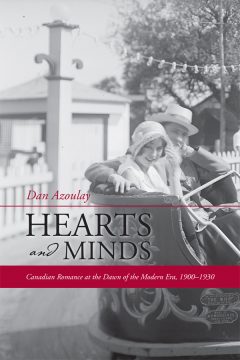“Old maid” once defined a single woman of 23. In rural Canada bachelors outnumbered ladies by 46 percent. With those kinds of pressures, how could an average Canadian get a decent date a hundred years ago?
The answers are unearthed in an unusual archaeological dig. Historian Dan Azoulay of McMaster University picked through some 20,000 lonely-hearts columns published in Western Home Monthly and Family Herald from 1904 to 1929 to document the dating game in the words of those who played it. “I believe I could live with almost anyone who could cook a good meal, wash the dishes and not grumble,” as one Alberta farmer put it.
Women were prized for prowess in making pie, playing the piano and appearing “delicate” but “not too proud.” Conversely eligible men were required to sober up, bathe and have cash: “To a good many bachelors, in other words, size mattered – the size of their land, their homes, and their bank accounts,” Azoulay writes in Hearts and Minds.
Rules of dating were excruciating: No touching, no wisecracking, no colourful language. Even gifts were prescribed: a book for her, a pencil holder for him.
“Two weeks before the start of World War I an Ontario bachelor had submitted a poem to the Family Herald called ‘Wanted: A Wife.’ The last verse went as follows: ‘A commonsense creature, but still with a mind to teach and to guide, exalted, refined – A sort of angel and housemaid combined.’”
“This was what most men wanted in 1914. After the war, they wanted something different.” In an instant all this Victorian ritual was swept away. Azoulay captures the moment with the Model T Ford.
Four cylinders, with no heater and a crank starter that could break your arm on recoil, the first mass-produced auto put sex on wheels. “There is much truth in the complaint of the young man that no girl wants him unless he owns a car!” the Herald reported in 1920. “There is nothing I like better than to see a woman who likes to…drive,” wrote one bachelor.
By the end of the decade – the Model T went out of production in 1927 – the number of births out of wedlock in Canada rose from 2 to 3.2 percent. “Some historians have said that, because men were now paying more for such outings, they expected physical affection in return,” notes Azoulay. “Possibly, but women seem to have been more than willing.”
By Tom Korski
Hearts and Minds by Dan Azoulay, University of Calgary Press; 300 pages; ISBN 978155238-5203; $35.95






